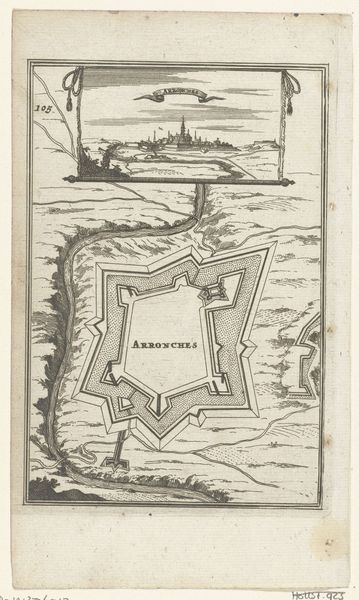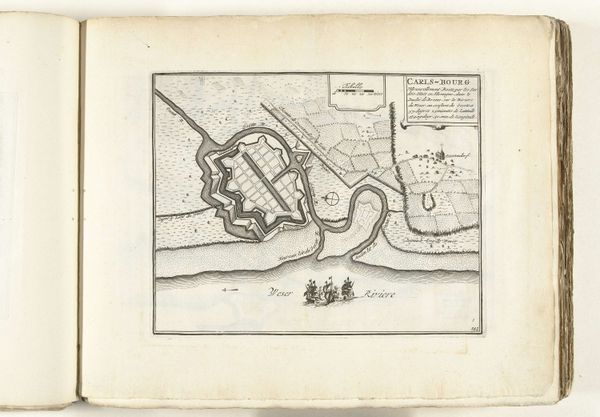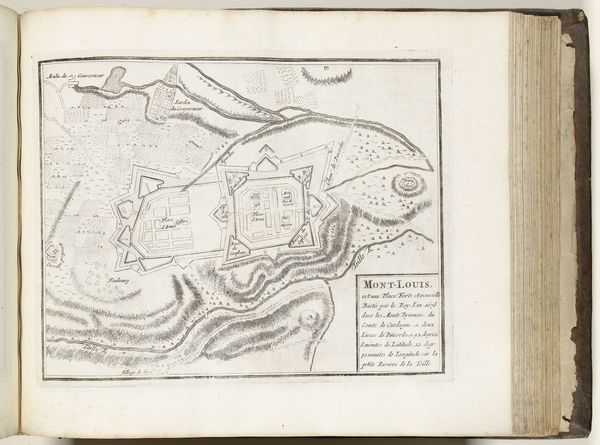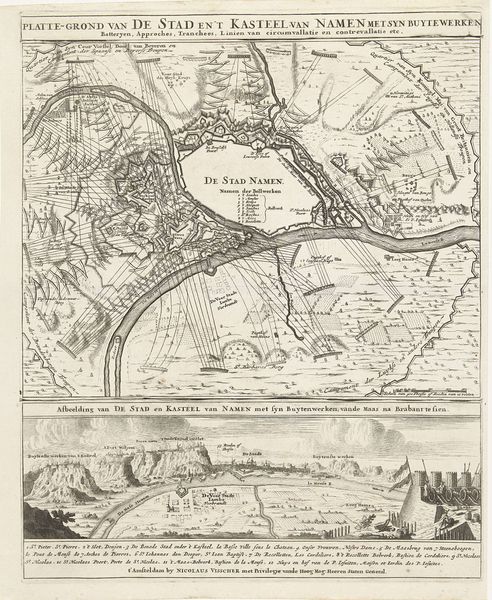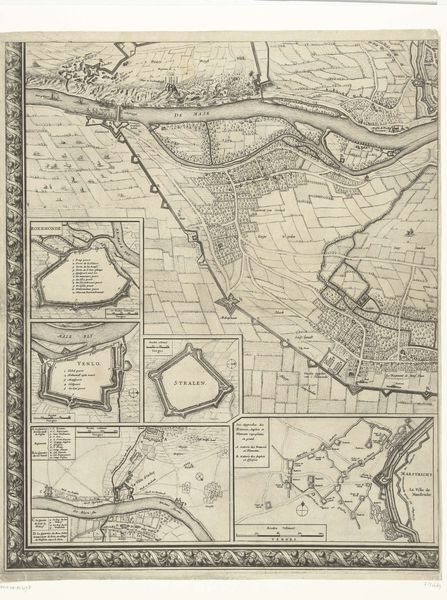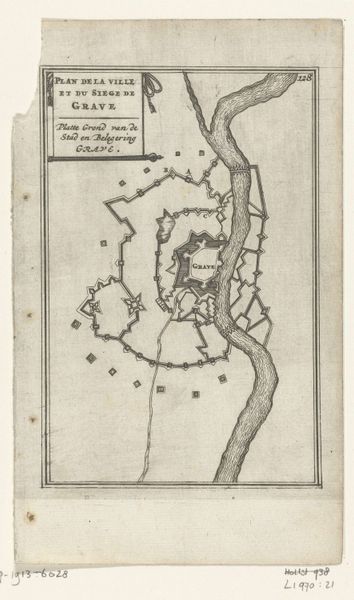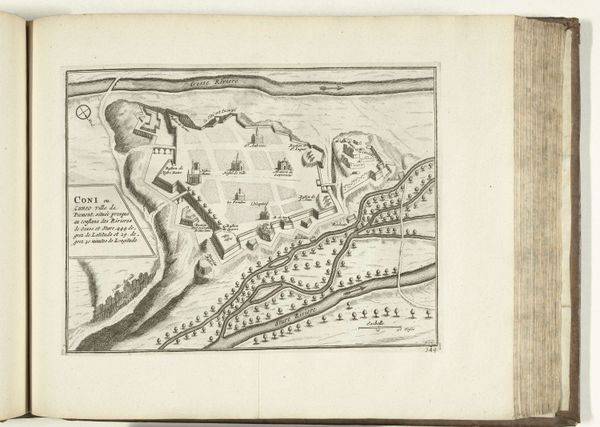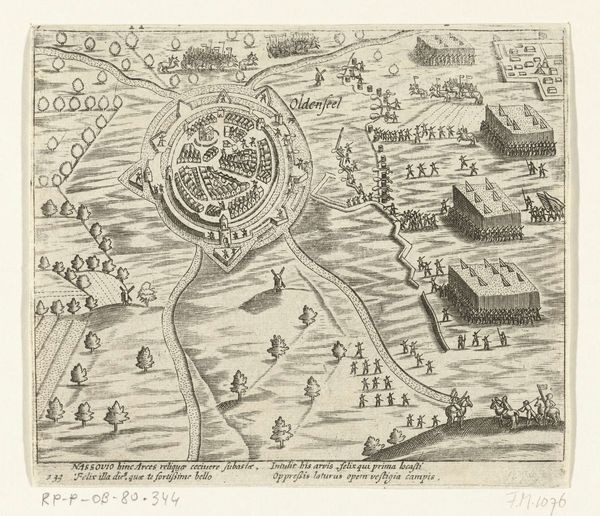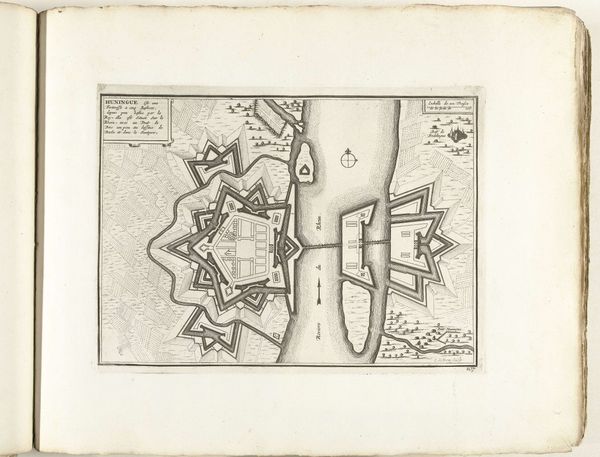
Illustratie voor 'Den Arbeid van Mars' van Allain Manesson Mallet 1672
0:00
0:00
romeyndehooghe
Rijksmuseum
print, engraving
#
baroque
# print
#
landscape
#
cityscape
#
engraving
Dimensions: height 185 mm, width 111 mm
Copyright: Rijks Museum: Open Domain
This illustration of Graveline, France was made by Romeyn de Hooghe, likely in the late 17th century, as an etching. De Hooghe was a master of this printmaking technique, using acid to bite lines into a metal plate. The linear precision evident here speaks to that skill. Look closely, and you can see the cross-hatching used to create areas of shadow, giving the image depth. This would have been an incredibly labor-intensive process, demanding not only artistic ability, but considerable time and patience. The print shows the town's strategic layout, surrounded by fortified walls. In its time, this image wasn't simply a work of art; it was a functional document, used for military planning and urban development. It shows the way the built environment was understood and reshaped through human effort, very much "the labour of Mars." Consider all the hands involved in its creation – from the engraver himself to the printers, papermakers, and distributors. This etching serves as a reminder that what we now consider art was once deeply embedded in the everyday world of work, politics, and consumption.
Comments
No comments
Be the first to comment and join the conversation on the ultimate creative platform.
